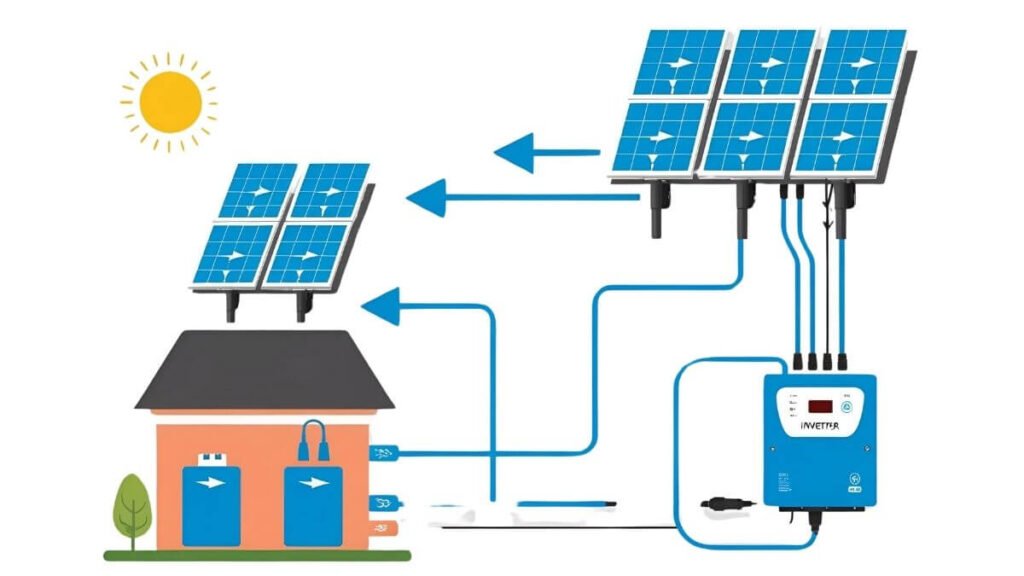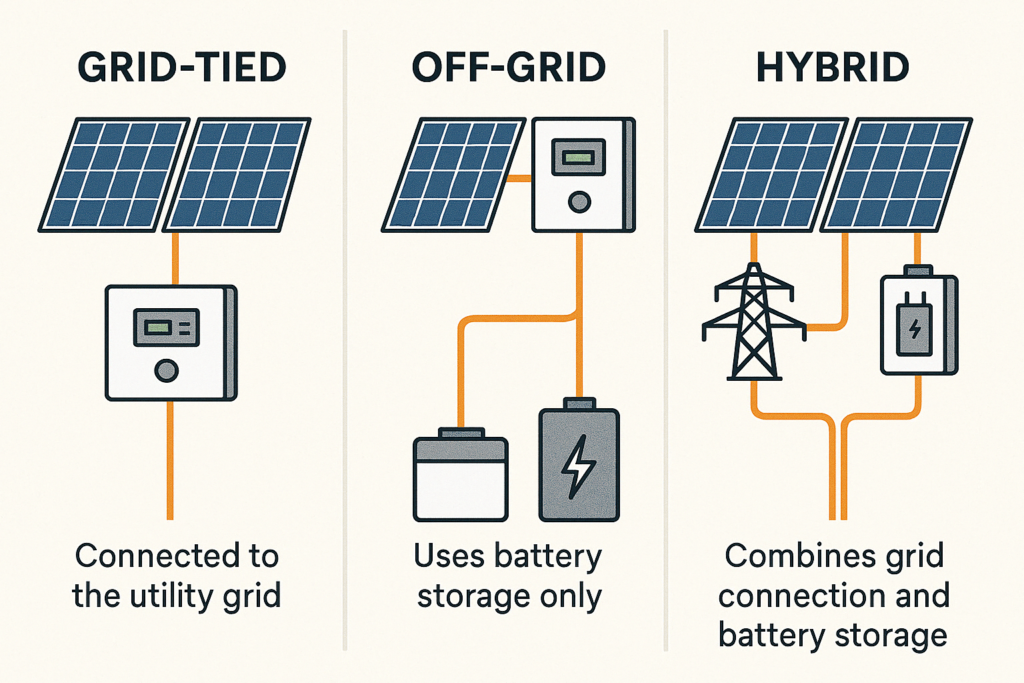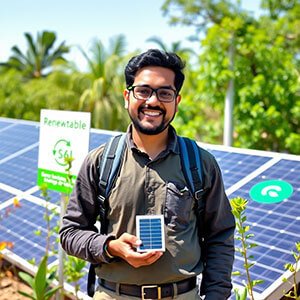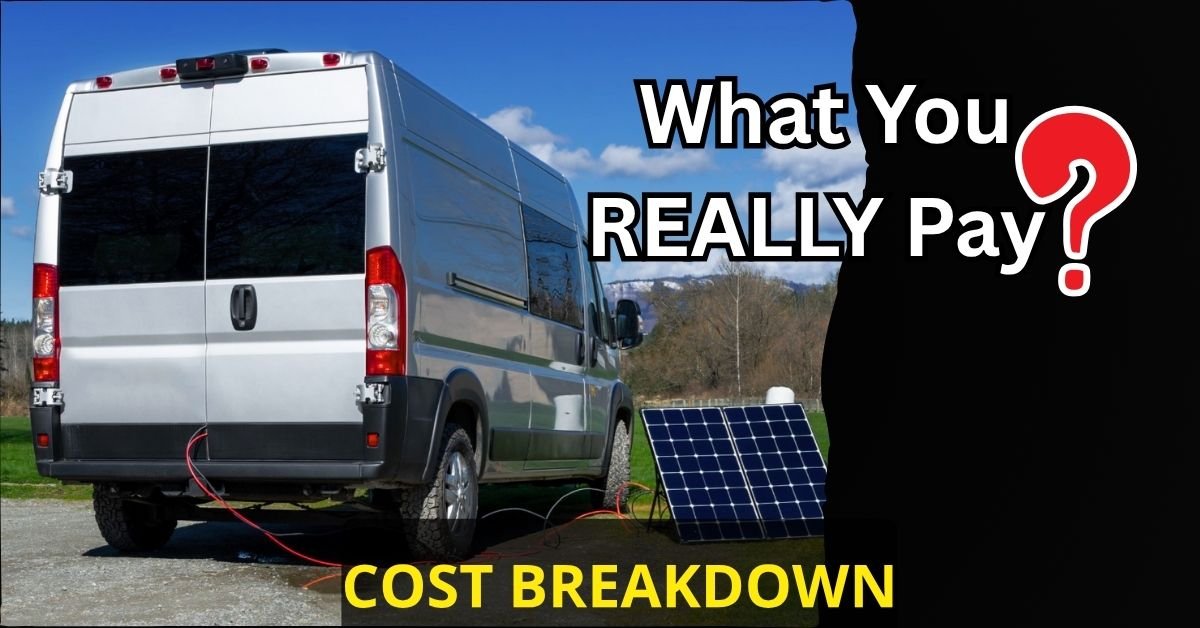Have you ever wondered how and in what process the contribution of modern science through sunlight is making it possible to provide environmentally friendly electricity? Even in remote villages from cities, unlimited personal electricity is available, solar panel systems have made this possible!
No one can imagine a world without electricity in 2025, Right? It has even become as important as other basic needs for human survival. However, the demand for renewable energy is constantly increasing compared to conventional grid electricity. And this has been possible only due to other scientific discoveries like solar power system.
Solar panel system has the advantage of supporting a clean environment and providing financial freedom, such as paying your own personal and monthly electricity bills.
What is a Solar Panel System, Exactly?
Simply, a solar panel is a system that captures sunlight and converts it into usable electricity (For On-Grid / Off-Grid). In this beginner’s guide, I’ll talk to you- its main components, different types of solar setups, and why using solar power is a smart move in 2025. Let’s now-

What are the main components of solar panel system?
A solar panel system is not just about the panels, but a collection of several key components that work together to generate, energy supply and store solar-powered electricity. I have written below step by step how you can set up this yourself (DIY solar install)-
Types of Solar Panels
One of the main devices commonly used in solar power systems is: Solar Panels ( made by photovoltaic “PV” cells), which absorb sunlight and convert it into direct current (DC) electricity.
Three types of panels are currently available on the market
- Monocrystalline panels: it’s high high-efficiency and sleek design panel. Best for limited roof space or small Off-Grid use.
- Polycrystalline panels: although more cost-effective than mono-panels, but they are somewhat less efficient in terms of power supply (power generation rates are significantly lower in cloudy skies or low sunlight).
- Thin-film / Portable panels: it is light and flexible. I suggest you to use in RVs and personal/family cars. However, this type of solar panel will be in the highest demand in the future, especially for DIY setups.

⚡ Inverter (The Brain of the System)
Since most homes use alternating current (AC) electricity, the inverter converts the DC power from the panels into usable AC power.
- String inverters – Cost-effective for standard installations.
- Microinverters – Attached to each panel, improving efficiency in shaded areas.
- Hybrid inverters – Work with battery storage for energy backup.
Importance: Without an inverter, the electricity produced by your panels would be unusable for most household applications.
🔋 Battery Storage (Optional but Useful)
Batteries store excess solar energy for use at night or during power outages. Popular options include:
- Lithium-ion batteries (e.g., Tesla Powerwall) – Long lifespan, high efficiency.
- Lead-acid batteries – More affordable but require maintenance.

- Benefits: Reduces dependency on the grid and ensures continuous power supply even when the sun isn’t shining.
- Popular Options: Lithium-ion batteries are widely used due to their efficiency and longevity.
Types of Solar Panel Systems
Not all solar setups are the same. Depending on your needs, you can choose from three main types:
🏡 Grid-Tied Solar System
- Connected to the utility grid.
- Excess energy can be sold back through net metering.
- No battery backup (power goes out during grid failures).
How It Works: Connected to the local utility grid, allowing you to draw power when your solar panels aren’t producing enough energy.
- Pros: Lower upfront costs and potential savings through net metering (selling excess energy back to the grid).
- Cons: No backup power during grid outages unless paired with battery storage.
🏕️ Off-Grid Solar System
- Fully independent from the utility grid.
- Requires battery storage and often a backup generator.
- Ideal for remote locations.
How It Works: Completely independent of the utility grid, relying solely on solar panels and battery storage.
- Pros: Ideal for remote locations without access to the grid. Provides full energy independence.
- Cons: Higher initial investment and requires careful energy management.
🔁 Hybrid Solar System
- Combines grid-tied and off-grid features.
- Uses battery storage for backup power.
- Best for energy resilience and maximizing savings.

How It Works: Combines elements of both grid-tied and off-grid systems, integrating solar panels, battery storage, and grid connectivity.
- Pros: Offers the best of both worlds energy independence and grid backup.
- Cons: More complex and costly than other options.
Benefits of Going Solar in 2025
Switching to solar isn’t just about saving money, it’s a smart investment for the future. Here’s why more people are making the switch:
✅ Lower Electricity Bills – Generate your own power and reduce reliance on the grid.
✅ Energy Independence – Protect yourself from rising energy costs.
✅ Eco-Friendly – Reduce carbon emissions and fight climate change.
✅ Increased Home Value – Homes with solar panels sell faster and at higher prices.
✅ Government Incentives – Tax credits and rebates can significantly lower installation costs.
Conclusion,
Is Solar Right for You?
Now that you know what a solar panel system is and how it works, the next question is: Should you go solar?
If you want to:
✔ Save money on energy bills
✔ Reduce your environmental impact
✔ Gain energy security
Then solar power could be a perfect fit! The best way to find out is to consult a local solar provider for a free quote and see how much you could save.
Ready to harness the power of the sun? ☀️ Get started with a solar assessment today!








I highly recommend ernestopro.com for anyone considering a solar panel system. Their expertise and comprehensive solutions make transitioning to solar energy straightforward and efficient. The detailed guidance they provide ensures you select the right components for your needs. I’ve had a fantastic experience with their services, and I am now enjoying the benefits of solar power. Definitely a top choice for this year and beyond!